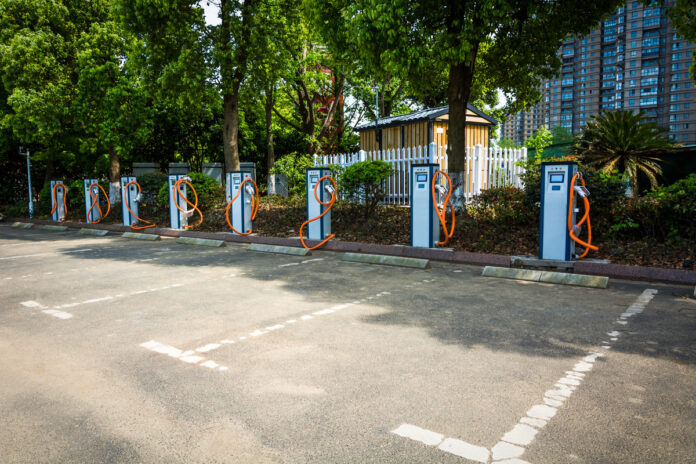Ever since EVs (Electric Vehicles) started to go mainstream, the buzz surrounding Chinese EVs has been unmistakable. These nimble, cost-effective marvels have sent shockwaves through established markets like the US and Europe, leaving industry stalwarts scrambling to keep up.
It’s a remarkable reversal of fortunes. Just a few years ago, the US was the undisputed leader in the EV realm, with more electric vehicles on the road than China. But China has made remarkable inroads, slowly and strategically cementing its position as the global EV powerhouse.
The Factors Behind China’s EV Edge
The secret to China’s EV supremacy lies not just in its low-cost manufacturing prowess, but in a multifaceted approach that has leveraged strategic industrial policies, generous subsidies, and a relentless focus on developing the critical technology that powers these eco-friendly rides.
Mastering the Battery Supply Chain
One of the key pillars of China’s EV dominance is its stranglehold on the lithium-ion battery supply chain. The country holds between 85% and 95% of the global production capacity for the major battery components, as well as around 70% of the world’s lithium refining capacity. This vertical integration has given Chinese manufacturers a significant cost and logistical advantage.
Targeted Industrial Policies
China’s rise as an EV juggernaut can be traced back to a strategic R&D program launched in 2001, focused on developing cutting-edge battery, motor, and other EV-related technologies. This industrial policy, coupled with supportive domestic financing, laid the groundwork for the country’s EV ecosystem to thrive.
Incentivizing EV Adoption
Complementing its industrial push, China has also rolled out generous subsidies and favorable policies to encourage domestic EV adoption. Crucially, these incentives were limited to locally-produced models, effectively shielding the nascent Chinese EV industry from foreign competition.
With its vast EV production capacity and a mature local supply chain, China is now poised to export its technological prowess to global markets. And India, with its burgeoning EV aspirations, has become a prime target for this automotive invasion.
India’s EV Landscape: Ripe for a Showdown
India’s fledgling EV industry has already witnessed the arrival of two Chinese players – BYD and MG Motor. However, the Indian government’s stringent approval processes have somewhat hindered the expansion of these foreign entities.
But the entry of Leapmotor, a Chinese EV manufacturer, through a joint venture with global automotive giant Stellantis, could be a game-changer. Leapmotor’s affordable hatchback and SUV models, with their impressive performance and range, are set to challenge the existing Indian EV landscape. In fact, Stellantis is exploring manufacturing them here under the same regulations that were meant to ease Tesla’s entry into the Indian landscape.
And they would be wise to enter now, at a time when India’s EV market is small but growing rapidly. In 2023, passenger vehicle sales grew by 10%, while EV sales nearly doubled. Domestic players like Mahindra & Mahindra have emerged as the fastest-growing brands, while Tata is the firm favourite among EV buyers. International newcomers are looking to throw their hat into the ring, with Leapmotor joined by the likes of Vietnam’s VinFast and the anticipated arrival of Tesla.
Given the strained geopolitical relationship between India and China, the Indian government is likely to maintain a watchful eye on the influx of Chinese EV models. The new regulations allowing increased scrutiny of foreign investments with links to neighboring countries could pose a challenge for Leapmotor’s expansion plans.
The Race for EV Supremacy in India
As the Indian EV market continues to expand rapidly, the stage is set for a fierce battle. Domestic players are racing to establish a strong local ecosystem, while global giants are jockeying for a slice of the pie.
Developing a Robust Domestic Supply Chain
The Indian government has taken steps to incentivize local EV battery manufacturing, attracting players like Reliance New Energy, Ola, and ACC Energy Storage. This push for self-reliance could help reduce EV prices and build a resilient domestic industry.
However, Chinese joint ventures like Leapmotor International may have an edge by tapping into their well-established Chinese supply chain and technological know-how. This could allow them to undercut their Indian rivals on pricing and feature offerings.
The Indian government’s vigilance towards foreign investments with Chinese links, coupled with its new policy to encourage local EV manufacturing, will shape the competitive dynamics in the years to come. Navigating this evolving regulatory landscape will be crucial for all players vying for a share of the Indian EV market.
The Automotive Pecking Order in Flux
The global automotive industry is witnessing a seismic shift, with China’s EV juggernaut poised to disrupt established hierarchies. As the battle for EV supremacy unfolds in India, the outcome could have far-reaching implications for the future of the industry.
The rise of affordable, efficient Chinese EVs has sent shockwaves through the US and European markets, leading to protectionist measures like increased tariffs as recently announced by US President Joe Biden. This dynamic could play out in India as well, as the government seeks to strike a balance between fostering domestic growth and managing geopolitical tensions.
The Indian EV market is ripe for the taking, with a diverse array of players jockeying for position. While domestic brands work to establish a robust local ecosystem, the entry of global heavyweights like Leapmotor and Tesla promises to shake up the status quo.
The Race for Technological Supremacy
As the battle for EV dominance intensifies, the focus will shift to technological innovation and manufacturing prowess. The ability to develop cutting-edge battery technology, optimize production processes, and deliver unparalleled performance and range will be the key differentiators.
The rise of China’s EV juggernaut has sent shockwaves through the global automotive industry, and India’s burgeoning EV market is the next battleground. As the competitive landscape evolves, the outcome of this clash of titans will shape the future of the automotive industry, both in India and beyond. The stakes are high, and the race is on to determine who will emerge as the new masters of the EV domain.


